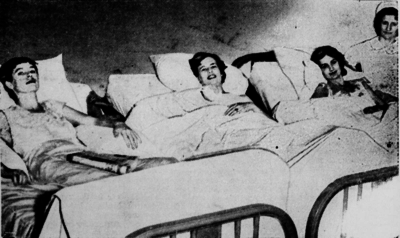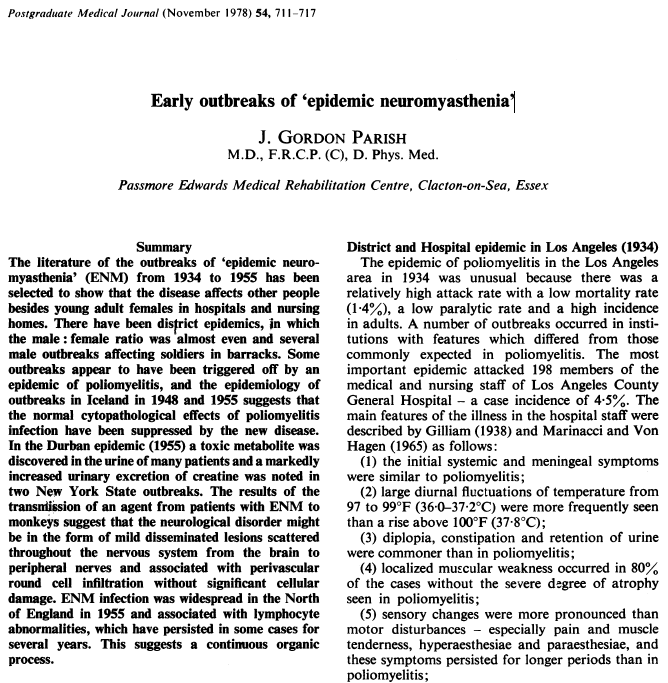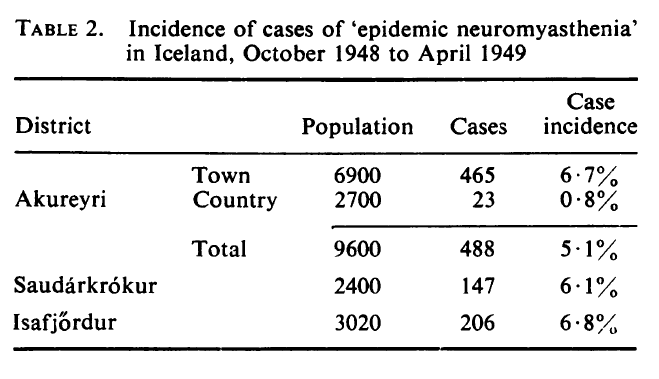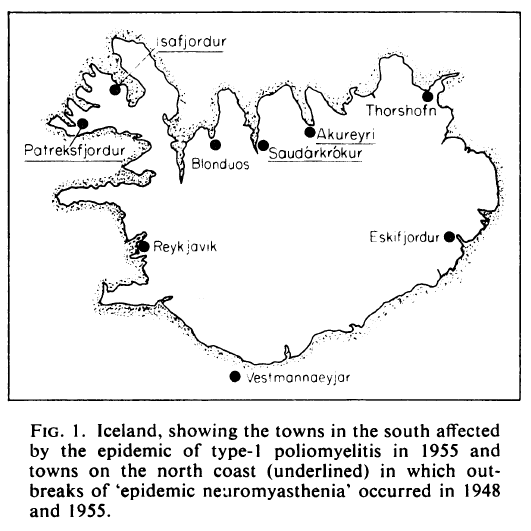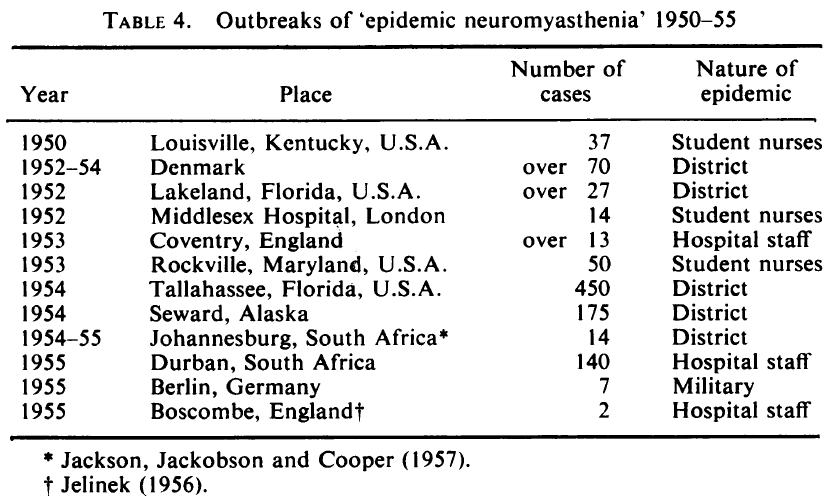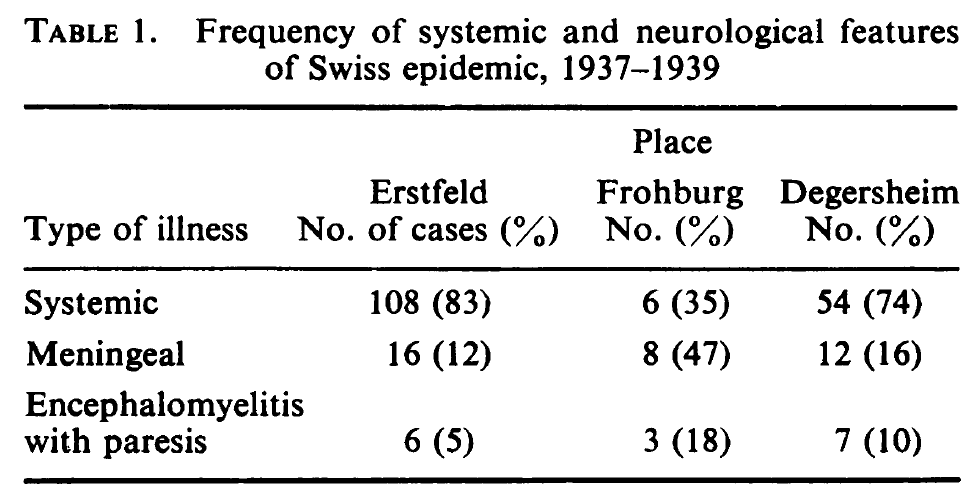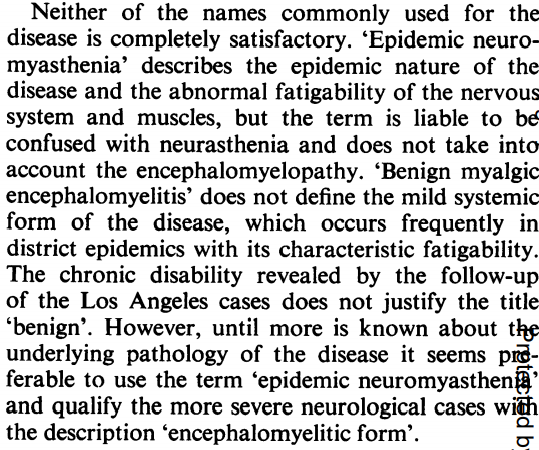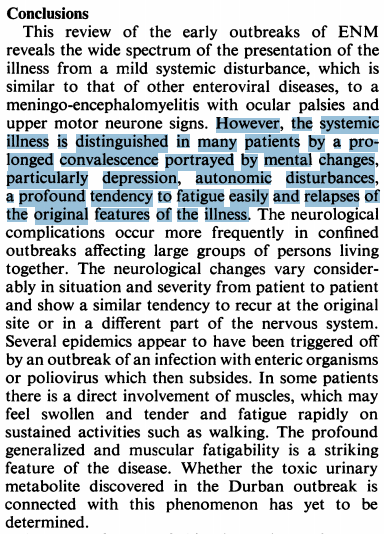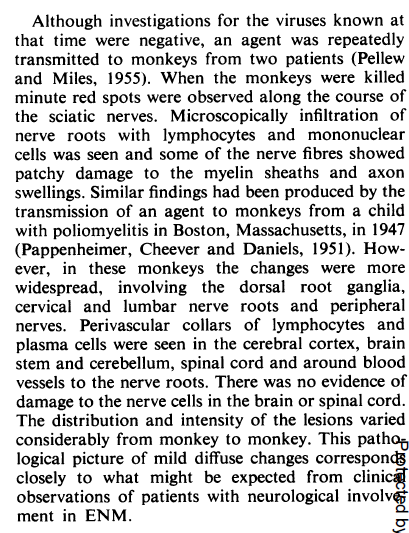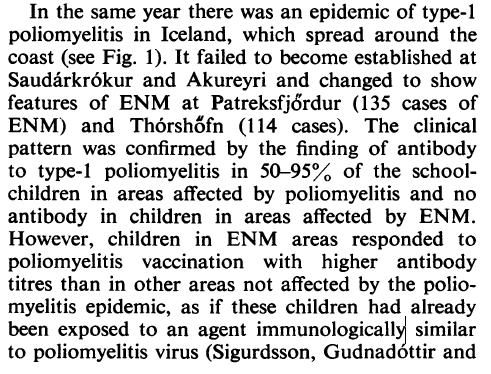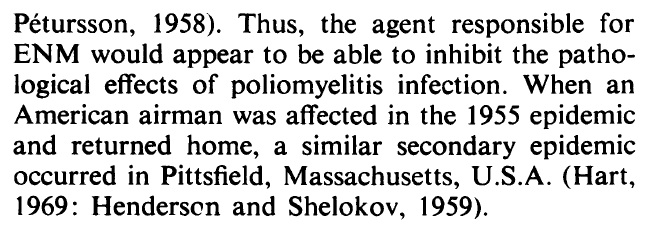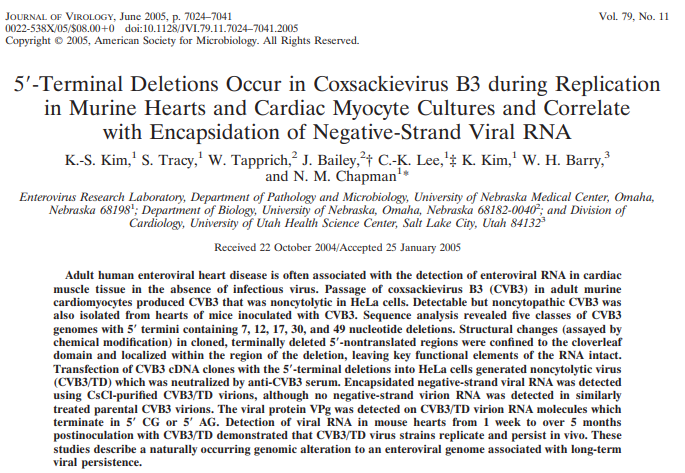As days get shorter, evenings longer, and the world in turmoil due to a pandemic, let me tell a sad and forgotten story. A tale of the early outbreaks of „epidemic neuromyasthenia“ or „myalgic encephalomyelitis“, or what many people today call „chronic fatigue syndrome“.
The illness was first observed as distinct clusters within actual outbreaks of polio during the 30s to 50s. It attacked adults more often than polio and they had less severe symptoms and were not dying, therefore it was dubbed „atypical poliomyelitis“ or „abortive poliomyelitis“.
Outbreaks in Los Angeles County Hospital (1932), outbreaks amongst soldiers and hospital stuff in Switzerland (1937-39), outbreaks in Akureyri on Iceland (1946), Adelaide in Australia (1949-53), and the famous outbreak in Royal Free Hospital in London (1955) are well documented.
From the available information and follow-up studies, we know that many patients from these epidemics developed severe chronic illness with neurological, immunological, and autonomic symptoms, which would today be diagnosed under the code G93.3 - postviral fatigue syndrome.
It was hypothesized, that this illness is an infection by an enteroviral strain, that mutated and diverged from the original polio outbreak, causing the abortive clinical picture. Although such virus was not isolated and characterized, compelling indirect evidence was gathered.
Most notably, the illness was transferred several times to monkeys. Also, in the areas of previous ME outbreaks, kids were not getting polio in subsequent epidemics, as if they were immunized against polio in the ME outbreaks by a similar enterovirus.
The riddle was not sufficiently explained, but the epidemic occurrence of ME or ME-like illnesses continued. Famously in 1984, around 150 people in Incline Village and Truckee, USA, fell ill with what was later, by a rather unfortunate decision, named „chronic fatigue syndrome“.
Although the proposed enteroviral involvement in ME was largely forgotten over the years, we now know that enteroviruses can persist in human cells as a result of mutations in non-structural parts of their genome during the acute phase of the infection.
Such persistence is suspected to play an etiological role in cardiomyopathy and type 1 diabetes (dysfunction of pancreatic beta cells). Polio-derived viral RNA sequences were even found in post-Polio syndrome 22-78 years after the original infection. https://www.ncbi.nlm.nih.gov/pmc/articles/PMC5504018/">https://www.ncbi.nlm.nih.gov/pmc/artic...
It would be very interesting to use these modern analyses on people from the original clusters of ME epidemics and confirm or refute the nearly 100-year-old theory. Unfortunately, the patients are probably all dead.
During the time of their lives, they were mostly ridiculed and label hysterical by the medical profession. As with many diseases in the past that were not understood, ME was labeled „psychosomatic“ or a result of „unhelpful illness beliefs“.
ME patients from the original outbreaks will not live to see their life-long illness uncovered; however, there are several millions of ME/CFS patients around the world right now. We should make sure they are treated as human beings, not as garbage.
Moral of the story: We don’t know everything, there are many things we don’t understand. Particularly in medicine and post-viral sequelae. If there is something we don‘t understand, we shouldn‘t ignore it, but study it and figure it out.
#MEawarenesshour
#MEawarenesshour

 Read on Twitter
Read on Twitter